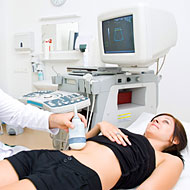- Male Infertility
- Male Infertility Symptoms
- Male Infertility Causes
- Infertility Tests
- Male Infertility Tests
- Infertility Treatment
- Female Infertility
- Female Infertility Symptoms
- Female Infertility Causes
- Female Infertility Tests
- Female Infertility Treatment
- Premature Ovarian Failure
- Unexplained Infertility
- Acupuncture for Infertility
- Egg donation
- Sperm Donation
Treatment for Infertility in Men
Infertility refers to the inability to conceive naturally within a period of one year (or six months in some cases). The cause of infertility could lie with either partner. In cases of male infertility (about one-third of all infertility cases), the problems are caused by low sperm count, poor mobility of the sperm, abnormalities of the sperm or problems related to ejaculation.
Male infertility treatment therefore aims at treating these conditions. Male infertility treatments range from medications, hormone treatments, and various surgical procedures that assist reproduction.
Treatment of Infection
Infections of the reproductive tract can cause infertility in men. These can usually be treated by medications such as antibiotics. Diseases such as mumps that may have occurred during adolescence could also cause infections that lead to infertility. These may require more aggressive treatments.
Infertility Surgery
Male fertility can be diagnosed by conducting tests such as semen analysis, blood tests and a complete physical examination. In cases where infertility is caused by problems with ejaculation or irregularities in the male reproductive system, infertility surgery may be required. Problems such as varicoceles or undescended testes can be treated by surgery. Vasectomies can be reversed by surgery as well.
Varicocele Ligation
Varicocele refers to the collection of varicose veins in the spermatic cord in one or both testicles. This in turn can cause sterility and infertility in men. Varicocele Ligation is a type of surgery that involves tying of the swollen veins. It is not a long surgery; it can be completed in just 45 minutes.
Vasovasostomy
Vasovasostomy is a surgical procedure performed to remove any obstructions in the male genital tract. This procedure can increase the possibility of conception through the treatment of ejaculation problems. Vasovasostomies are also conducted to reverse a prior vasectomy and restore fertility.
Epididymovasostomy
Vasoepididymostomy or epididymostomy is a more complicated procedure as compared to a vasovasostomy. It is aimed at removing any kind of obstruction or blockages to the epididymis, so that the sperms can flow easily from the testes during ejaculation. The success rate of this type of surgery indicates a 50 percent pregnancy rate upon completion and recovery.
Transurethral Resection (TUR) of the Ejaculatory Duct
Transurethral Resection (TUR) of the Ejaculatory Duct is an endoscopic surgery performed to treat men suffering from an obstruction in the ejaculatory ducts or azoospermia. It is conducted by re-sectioning the ducts in the urethra to resolve the condition.
Sperm Aspiration
When infertility is caused by azoospermia (no sperm), or sperm that are not motile or even dead, sperm aspiration may be carried out. The aim is to obtain the most viable sperm from the reproductive tract. These viable sperm are then used for procedures such as ICSI and IUI.
Assisted Reproductive Techniques
Advancements in medicine and technology have made a number of assisted reproductive techniques possible. Normally conducted on women who have problems with their fallopian tubes or cervix, assisted reproductive techniques can also be used to treat cases where the cause of infertility is unexplained.
Semen Processing
When a sample of motile, healthy sperm is required, sperm processing is carried out. The methods involve techniques such as centrifugation and dilution to obtain a highly concentrated sample that is then used for different assisted reproductive procedures.
Intrauterine Insemination
Intrauterine Insemination is used to treat infertility caused by blockages in the fallopian tubes, ovarian failure, and male infertility due to low sperm count and morphology. The procedure bypasses the cervix and brings about conception by placing a viable sperm sample directly into the uterus.
In Vitro Fertilization (IVF)
In Vitro Fertilization (IVF) uses the hormone hCG to stimulate egg production in women. These eggs are then aspirated and collected along with a viable sperm sample from the male partner. The processed eggs and sperm are inseminated under laboratory conditions and transferred back into the uterus.
Gamete Intrafallopian Tube Transfer (GIFT)
The eggs of the female are retrieved and mixed with the sperm in a laboratory. These egg and sperm are then injected back into the fallopian tubes for conception to take place. Unlike IVF, fertilization in this procedure takes place within the tubes and not in a lab.
Micromanipulation
Micromanipulation refers to the different techniques used to increase the ability of the sperm to fertilize the egg. Intracytosplasmic Sperm Injection or ICSI is one such technique using special micromanipulation tools and microscopes to inject sperm into the center of the egg resulting in fertilization.


